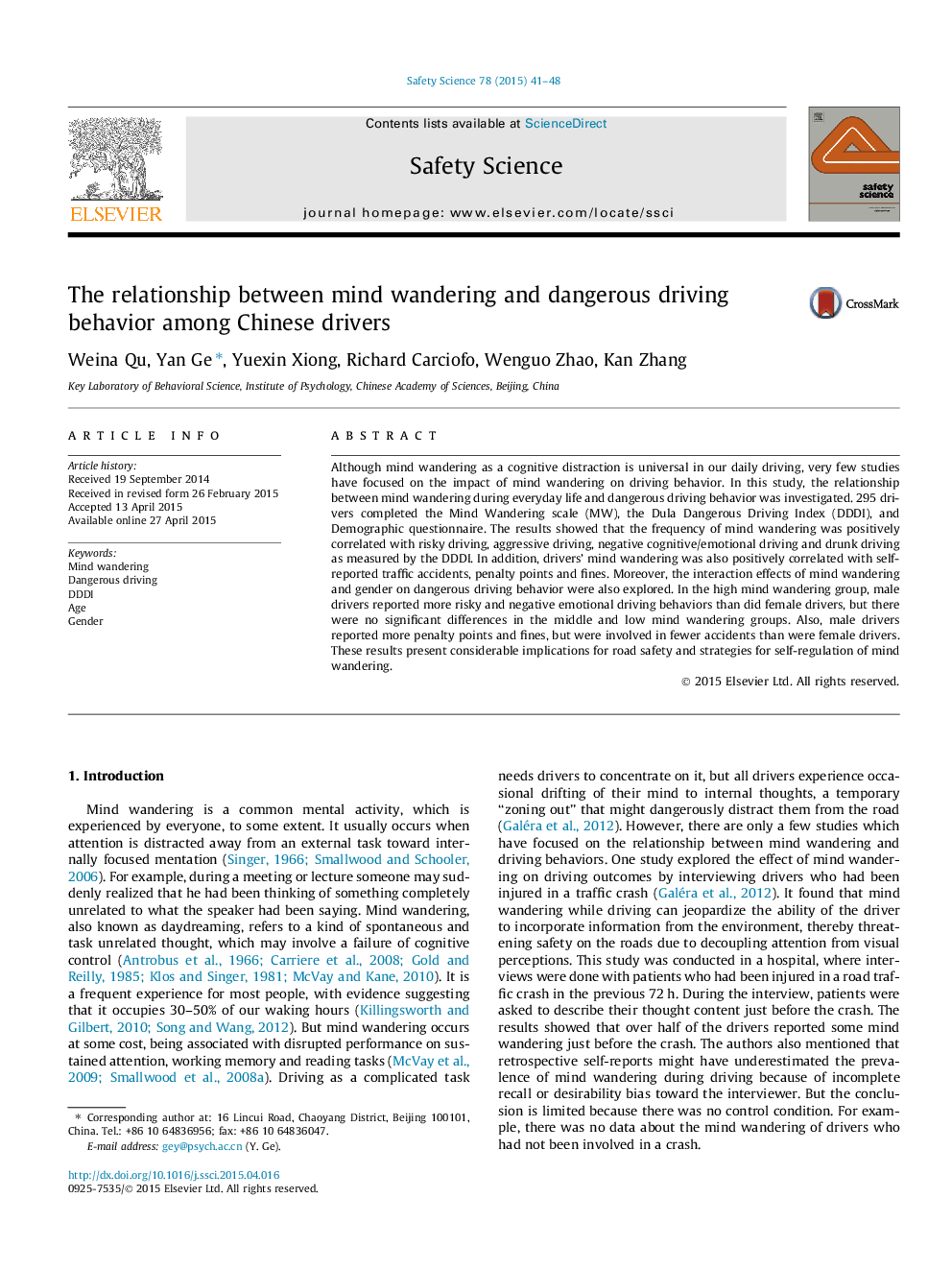| Article ID | Journal | Published Year | Pages | File Type |
|---|---|---|---|---|
| 6975726 | Safety Science | 2015 | 8 Pages |
Abstract
Although mind wandering as a cognitive distraction is universal in our daily driving, very few studies have focused on the impact of mind wandering on driving behavior. In this study, the relationship between mind wandering during everyday life and dangerous driving behavior was investigated. 295 drivers completed the Mind Wandering scale (MW), the Dula Dangerous Driving Index (DDDI), and Demographic questionnaire. The results showed that the frequency of mind wandering was positively correlated with risky driving, aggressive driving, negative cognitive/emotional driving and drunk driving as measured by the DDDI. In addition, drivers' mind wandering was also positively correlated with self-reported traffic accidents, penalty points and fines. Moreover, the interaction effects of mind wandering and gender on dangerous driving behavior were also explored. In the high mind wandering group, male drivers reported more risky and negative emotional driving behaviors than did female drivers, but there were no significant differences in the middle and low mind wandering groups. Also, male drivers reported more penalty points and fines, but were involved in fewer accidents than were female drivers. These results present considerable implications for road safety and strategies for self-regulation of mind wandering.
Related Topics
Physical Sciences and Engineering
Chemical Engineering
Chemical Health and Safety
Authors
Weina Qu, Yan Ge, Yuexin Xiong, Richard Carciofo, Wenguo Zhao, Kan Zhang,
